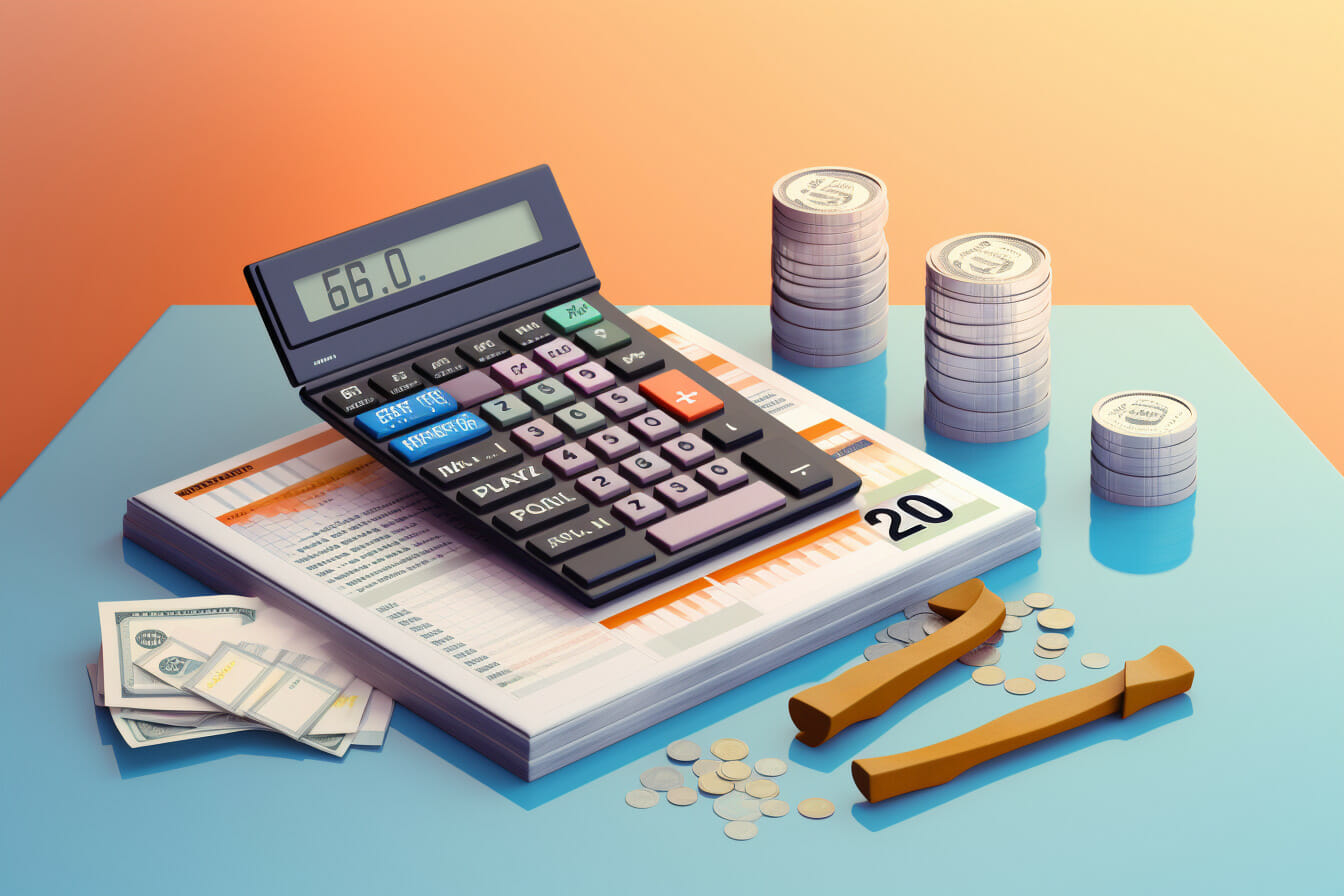Calculating Rate of Return: Step-by-Step Guide
Want to measure your investment’s performance? You’re in the right place. This article will guide you on how to calculate your rate of return. We’ll walk you through the basic steps, give you a detailed formula, and show you how to apply it to your investments.
Plus, we’ll help you analyze and interpret the results. So, let’s get started and make your money work for you!
Table of Contents
Understanding the Importance of Investment Performance

You’ve got to understand the importance of investment performance, as it helps you determine the rate of return on your investments.
You must know how your investments are doing to track your wealth and make informed decisions about future investments.
The rate of return is the gain or loss made on an investment relative to the amount of money invested. It’s typically expressed as a percentage.
So, if you’ve invested $10,000 and earned $1,000, your rate of return is 10%.
Understanding this allows you to compare the performance of different investments, helping you decide where to put your money.
Remember, the higher the rate of return, the more profitable the investment.
Essential Steps for Computing Profitability
Figuring out your investment’s profitability involves a few basic steps.
First, you need to know your initial investment amount. It’s the money you put into the investment at the beginning.
Next, track the final value of your investment. This is what your investment is worth now.
Subtract your initial investment from the final value to calculate the gain or loss. If you see a positive number, you’ve made a profit. But, if it’s negative, you’ve had a loss.
Finally, divide the gain or loss by the initial investment and multiply by 100 to get the simple
rate of return. This percentage shows the effectiveness of your investment. Remember, the higher the rate of return, the better your investment’s performance.
Detailed Formula for Yield Measurement
Understanding how to measure yield in detail isn’t as difficult as it seems. The rate of return formula is very straightforward. You’ve got to subtract the initial value of the investment from the final deal, then divide that by the initial value. So, in other words, it’s (Final – Initial) / Initial.
Here’s an example. Let’s say you’ve invested $1000. After a year, your investment is worth $1100. The calculation would be ($1100 – $1000) / $1000 = 0.1 or 10%. That’s your rate of return.
Remember, this formula measures the total return, including dividends, capital gains, and interest. However, it doesn’t account for inflation or taxes, which can significantly impact your recovery.
Applying the Formula to Real-world Investments
Let’s use this formula for real-world investments and see how it works.
Suppose you buy a stock for $100, and after a year, it’s worth $110—the dividends you received during the year amount to $5.
In this case, the total return is the $10 increase in price plus the $5 in dividends, which equals $15.
So, the rate of return is $15 divided by your initial $100 investment, which equals 0.15 or 15%. This means that you earned a 15% return on your investment.
Remember, the rate of return can be positive or negative, depending on whether the investment gains or loses value. So, always keep an eye on your investments to track their performance.
Analyzing and Interpreting the Results

Analyzing and interpreting your investment results is crucial to make informed decisions for future investments. Once you’ve calculated your rate of return, you need to understand what it means.
If it’s a positive percentage, you’re making money. If it’s negative, you’re losing money. However, don’t just look at the numbers. Take into account the risk associated with the investment. A higher rate of return usually means higher risk.
Compare your rate of return with other similar investments or the market average. This gives you perspective on how well you’re doing. Remember, investing is a long-term game. Don’t let temporary losses discourage you.
Keep learning, keep analyzing, and keep making informed decisions. Your financial future will thank you.
Frequently Asked Questions
What is the rate of return?
The rate of return (ROR) is a measure used to evaluate the profitability of an investment. It measures the gain or loss on an investment relative to the amount invested.
How do I calculate the rate of return?
The rate of return is calculated by taking the difference between the final value of the investment and the initial investment and then dividing that by the initial investment. The result is then expressed as a percentage.
What is the difference between the nominal rate of return and the real rate of return?
The nominal rate of return is the rate of return without accounting for inflation, while the real rate of return takes inflation into account. The actual rate of return is a more accurate measure of the profitability of an investment.
What is the compound annual growth rate (CAGR)?
The compound annual growth rate (CAGR) is a measure used to determine an investment’s average annual growth rate over a specified period. It takes into account the compounding effect of returns.
What is the difference between the rate of return and the return on investment?
The rate of return measures the profitability of an investment. In contrast, the return on investment (ROI) is a specific measure of the return on the initial investment, taking into account the time value of money and other factors.
What is cash flow, and how does it relate to the rate of return?
Cash flow refers to the money an investment generates over a given period. It is an essential factor in calculating the rate of return, as it affects the profitability of the investment.
What is the internal rate of return (IRR)?
The internal rate of return (IRR) is a financial metric used to evaluate the profitability of an investment. The discount rate makes the net present value of the investment’s cash flows equal to zero.
How do I calculate the rate of return?
To calculate the rate of return, you need to divide the net gain or loss of an investment by the current value of the investment. Then, multiply the result by 100 to get the investment’s initial value percentage.
What is the difference between rate of return and return on investment (ROI)?
The rate of return measures the percentage change in the value of an investment over a set period, while the return on investment (ROI) considers the total gain or loss relative to the initial investment.
How do I determine the annual rate of return?
To determine the annual rate of return, you need to calculate the rate of return for each year of the investment period and then calculate the average rate of return using these yearly returns.
Is there a specific calculator to calculate the rate of return?
Yes, various online calculators and financial software can help you calculate the rate of return. These calculators often provide additional features to analyze and compare different investments.
Why is it essential for an investor to calculate the rate of return?
Calculating the rate of return is important for investors as it helps them assess the performance of their investments and make informed decisions based on the profitability of different investment options.
Can I use the rate of return to calculate my marginal rate of return?
No, the rate of return and the marginal rate of recovery are different concepts. The marginal rate of return calculates the rate of change in the rate of return for each additional unit of investment. It helps investors determine the optimal amount of investment for maximizing returns.
Conclusion
So, you’ve got the scoop on calculating your rate of return. Knowing how your investments perform is vital; thankfully, it’s not rocket science.
You can quickly figure it out with the right formula and basic math. Please remember to look over and interpret your results to make informed decisions.
Keep at it, and you’ll become an investment whiz in no time!













